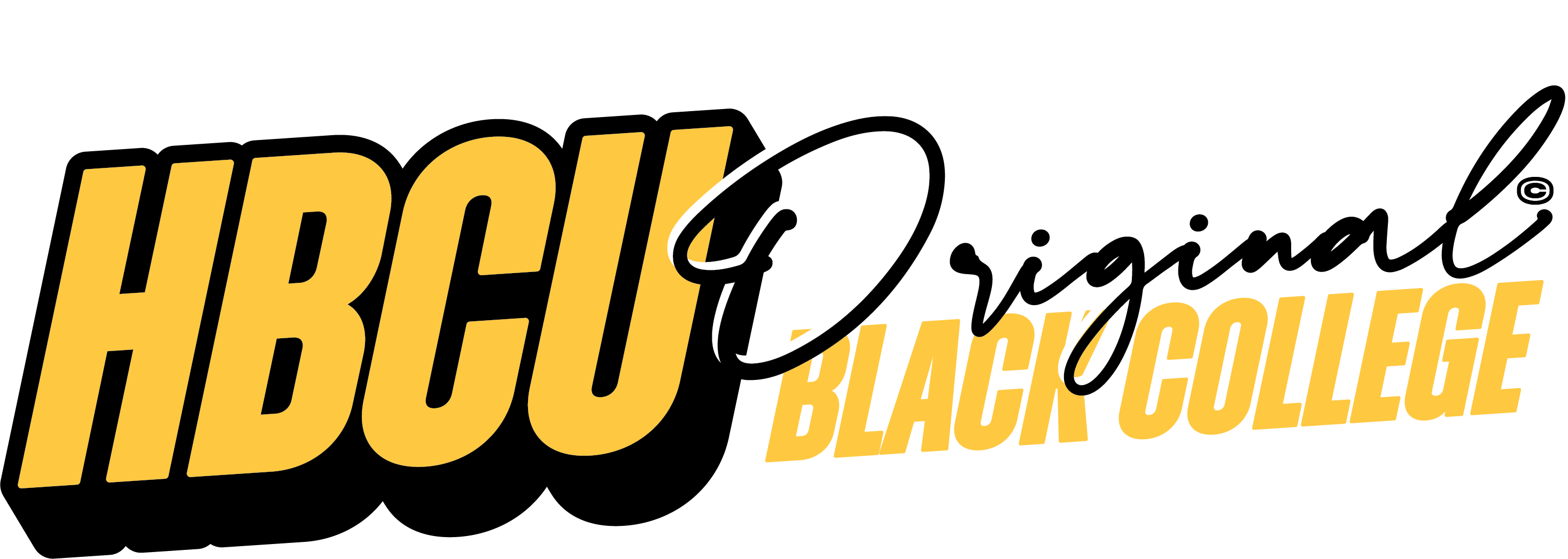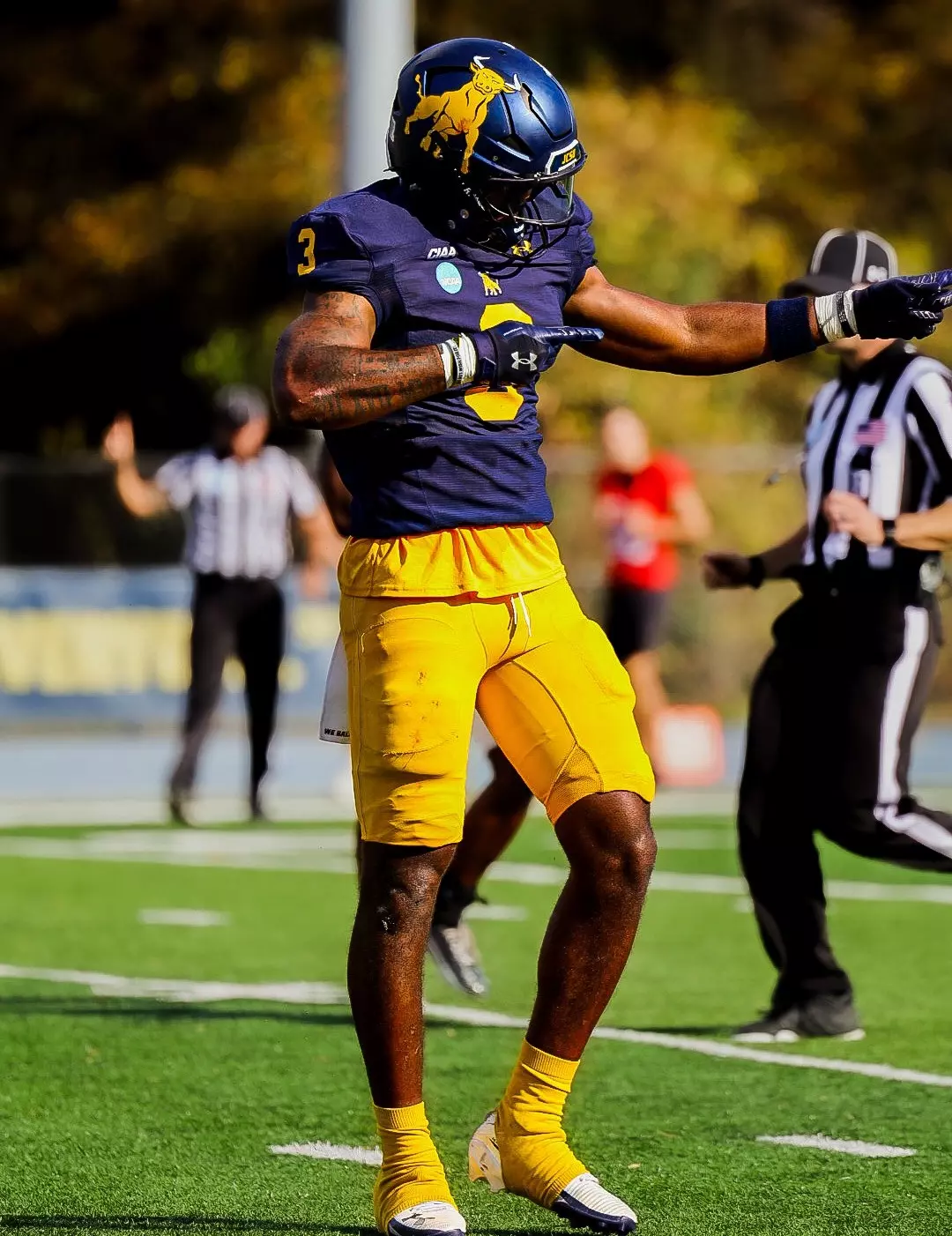Sports
The JUCO Comeback: Diego Pavia Defeats the NCAA, Joe Thomas Sr. the Poster Child for ‘I Still Got It!



In a surprising twist that’s shaking up college football, the NCAA has found itself in the middle of a significant eligibility shake-up — and it’s all thanks to a landmark legal case involving a player who probably hasn’t been on most fans’ radar. Enter Diego Pavia, whose legal battle with the NCAA over his JUCO eligibility is why former players across the country are suddenly dusting off their old cleats and asking, “If Diego can do it, why can’t I?”
Pavia, a former JUCO quarterback, defeated the NCAA in court, securing a monumental victory for players who’ve spent time in junior college but were previously told their eligibility was shot after too many years had passed. The court issued an injunction, effectively allowing Pavia to continue his college career despite being out of the game for several years. And while Pavia’s case was all about fairness for JUCO players, it had an unintended side effect — the rise of a new generation of “washed-up” former players coming out of retirement to reclaim their eligibility.
The Lawsuit That Changed Everything
In what is being called a “game-changer” by legal experts, Diego Pavia’s victory has opened the door for a wave of former JUCO players to declare, “Hey, I’ll get it suddenly!” Pavia filed a lawsuit after the NCAA refused to grant him eligibility, citing an obscure rule that prevented players who’d been out of college football for too long from getting their eligibility back. But the court didn’t see it that way. The ruling was clear: JUCO players deserve the same four years of eligibility, no matter how much time has passed.
Pavia’s victory sent shockwaves through the world of college sports, and suddenly, every former JUCO athlete with a few grey hairs and a dad bod began to rethink their retirement plans.

Joe Thomas Sr. Becomes the New Poster Child for “I Can Still Play!”
And here’s where things get genuinely hilarious. While Pavia’s case was about fairness, it’s Joe Thomas Sr. who became the unintentional poster child for this new wave of players. If you haven’t heard of Joe Thomas Sr., he’s about to be your new hero — and probably the last person you’d expect to inspire a generation of older, “washed-up” football players.
In his late 40s, Thomas made history as the oldest player to ever play in a Division I football game, suiting up as a running back for HBCU MEAC member South Carolina State University — the team that was the runner-up in the 2024 Black College Football Championship Celebration Bowl just a week ago in Atlanta, Georgia. At 47 years old, Thomas wasn’t exactly burning up the field, but with sheer determination and the legal win from Diego Pavia’s case, Joe Thomas Sr. proved that age is just a number and there’s always room for a little more football. He wasn’t sprinting down the field, but he was running. Slowly, yes — but running nonetheless.
And now, thanks to Pavia’s case, older athletes — some who haven’t played in years — are desperate to follow in Thomas’ footsteps.

A New Era of “Senior” JUCO Comebacks
Just imagine the scene: Bob “The Bulldozer” from the Class of 1997, who hasn’t touched a football since his last campus kegger, suddenly jumps on Facebook and posts a picture of his high school highlight reel, claiming, “Hey, Joe Thomas Sr. did it. I’m ready for my comeback.” You might even catch Terry “The Tornado” from 2002 hitting up coaches on LinkedIn to see if they need a “veteran” player with lots of wisdom and a few extra pounds.
All these “veteran” players now have Diego Pavia’s lawsuit to thank and Joe Thomas Sr.’s legendary comeback story. There’s a whole new crop of 40-something men who now think they can still make it, and they’ll be referencing Joe Thomas Sr. as the prime example of why age is just a number.
The NCAA’s Worst Nightmare: The Rise of the Senior League
The NCAA never could have predicted this: a flood of older players showing up at their doorsteps, paperwork in hand, demanding to be let back into college football. Thanks to Pavia and Thomas, the NCAA is now facing a new problem: how to handle an influx of athletes who have been out of the game for years, if not decades, but now want to take advantage of the rule change.
“Coach, I’m 45, but if you put me on the field, I’ll show you a thing or two,” might just be the following line you hear from the new batch of JUCO hopefuls. And college football programs? They’re about to be flooded with email inquiries from players who were once “too old” but now have a new lease on their football careers.
Thanks to Diego Pavia’s legal win, the NCAA’s new ruling, and the unexpected rise of Joe Thomas Sr. as the face of “I Still Got It,” we’re about to enter an extraordinary era of college football. A new wave of former JUCO players, who have long since hung up their helmets, are now determined to return to the field. Whether it’s Bob “The Bulldozer“ or Terry “The Tornado,“ expect to see a lot more grey-haired players showing up to recruit camps, proclaiming they’ve got “untapped potential“ — and that Joe Thomas Sr. paved the way for them to show it.
Who knows? The next Joe Thomas Sr. might be an ex-JUCO player sitting on a recliner right now, talking about how “he was the best running back in his prime“ — and now, with the new NCAA rule, that prime might extend a few more years.
HBCU ORIGINAL
HBCU Innovation Hubs: The New Power Centers of Black Tech & Entrepreneurship

Over the past five years, HBCUs have quietly become epicenters for Black innovation and entrepreneurship. Campuses that were once known primarily for their cultural and academic legacy are now home to tech incubators, AI labs, robotics centers, and startup accelerators — all designed to give students a competitive edge in high-demand industries.
Innovation Meets Culture
What sets HBCU innovation hubs apart is their culturally rooted mission. Students don’t just create tech for profit; they develop solutions tailored to historically underserved communities:
-
AI platforms helping small Black-owned businesses scale.
-
Fintech solutions for underbanked populations.
-
Telehealth apps focused on Black maternal and mental health.
-
AgriTech initiatives tackling food deserts in urban areas.
These hubs provide real-world experience and foster collaboration between students, alumni, and industry leaders.
Cutting-Edge Tools and Programs
HBCU innovation hubs now offer:
-
AI labs with cloud credits from Google, Microsoft, and AWS
-
VR-based pitch simulation programs for startup competitions
-
3D printing and robotics labs
-
Blockchain tools for secure credentialing and digital portfolios
-
Web3 workshops for NFTs, decentralized finance, and crypto literacy
Alumni and Student Success Stories
-
A Morehouse alum’s AI-driven platform predicts student retention trends for universities nationwide.
-
A Spelman graduate launched a telehealth app for maternal care, receiving $2.5M in seed funding.
-
Howard engineering students launched a drone-mapping startup to track flood zones in historically neglected neighborhoods.
How to Get Involved / Learn More
Students, alumni, and aspiring entrepreneurs can tap into these resources:
-
Google for Startups – https://startup.google.com
-
Microsoft Learn Student Hub – https://docs.microsoft.com/learn/students
-
AWS Educate – https://aws.amazon.com/education/awseducate/
-
Black Tech Pipeline – https://blacktechpipeline.com
HBCU ORIGINAL
Marshall Faulk to Southern University: Hall of Famer Takes Over Jaguars Program in Landmark Hire

BATON ROUGE, La. — Southern University is making a splash. A massive one.
Hall of Famer Marshall Faulk is officially returning home to Louisiana — this time as the new head coach of the Jaguars.
Southern has agreed to a three-year deal with Faulk, according to multiple sources, marking the first collegiate head-coaching opportunity for the New Orleans native. The move sends shockwaves across the HBCU landscape and continues a growing trend of marquee NFL legends taking the reins at historically Black programs.
Faulk, 52, spent the past year under Deion Sanders at Colorado, serving as the Buffaloes’ running backs coach and helping develop one of the nation’s most high-profile offenses. It was his first coaching job since retiring from the NFL — a reminder that Southern is betting big on star power and football IQ.
A Hall of Fame Resume Arrives at an HBCU Powerhouse
Before stepping into coaching, Faulk’s playing career was nothing short of iconic.
After shredding defenses for three seasons at San Diego State, he became the No. 2 pick in the 1994 NFL Draft. He went on to terrorize the league for 12 seasons with the Indianapolis Colts and the St. Louis Rams’ “Greatest Show on Turf.”
-
12,279 rushing yards
-
136 total touchdowns
-
2000 NFL MVP
-
Super Bowl XXXIV Champion
-
Pro Football Hall of Fame Class of 2011
Now he brings that pedigree less than 90 minutes from where he grew up in New Orleans — to a Southern program starving for stability.
Southern Turns the Page After Turbulent Season
Southern’s 2025 campaign has been brutal:
-
1–10 record
-
Nine straight losses
-
Head coach Terrence Graves dismissed after a 1–6 start
-
Fifth head coach since 2020
The Jaguars have talent, but not traction. Faulk’s arrival signals a reboot — and an era where Southern hopes to pair NFL star credibility with HBCU tradition.
A Trend Continues: NFL Legends Taking Over HBCUs
Faulk becomes the latest major name to enter HBCU coaching circles:
-
Michael Vick at Norfolk State
-
DeSean Jackson at Delaware State
-
Eddie George (Tennessee State, 2021–24)
-
Deion Sanders (Jackson State, 2020–22)
The star-coach phenomenon has injected new visibility, recruiting power, and national intrigue into HBCU football. Faulk immediately becomes one of the most prominent figures in the space.
What’s Next for the Jaguars?
Faulk inherits a roster needing direction and a fan base hungry for revival. His NFL experience, regional ties, and partnership with Sanders this past season offer Southern a blueprint for relevance — and maybe more.
Southern closes its season this Saturday against Grambling. After that, it’s Faulk’s show.
The Jaguars wanted a leader who could reset the culture.
They hired a Hall of Famer.
They hired Marshall Faulk.
HBCU ORIGINAL
JCSU & VIRGINIA UNION FALL IN THE NCAA D-II PLAYOFFS**
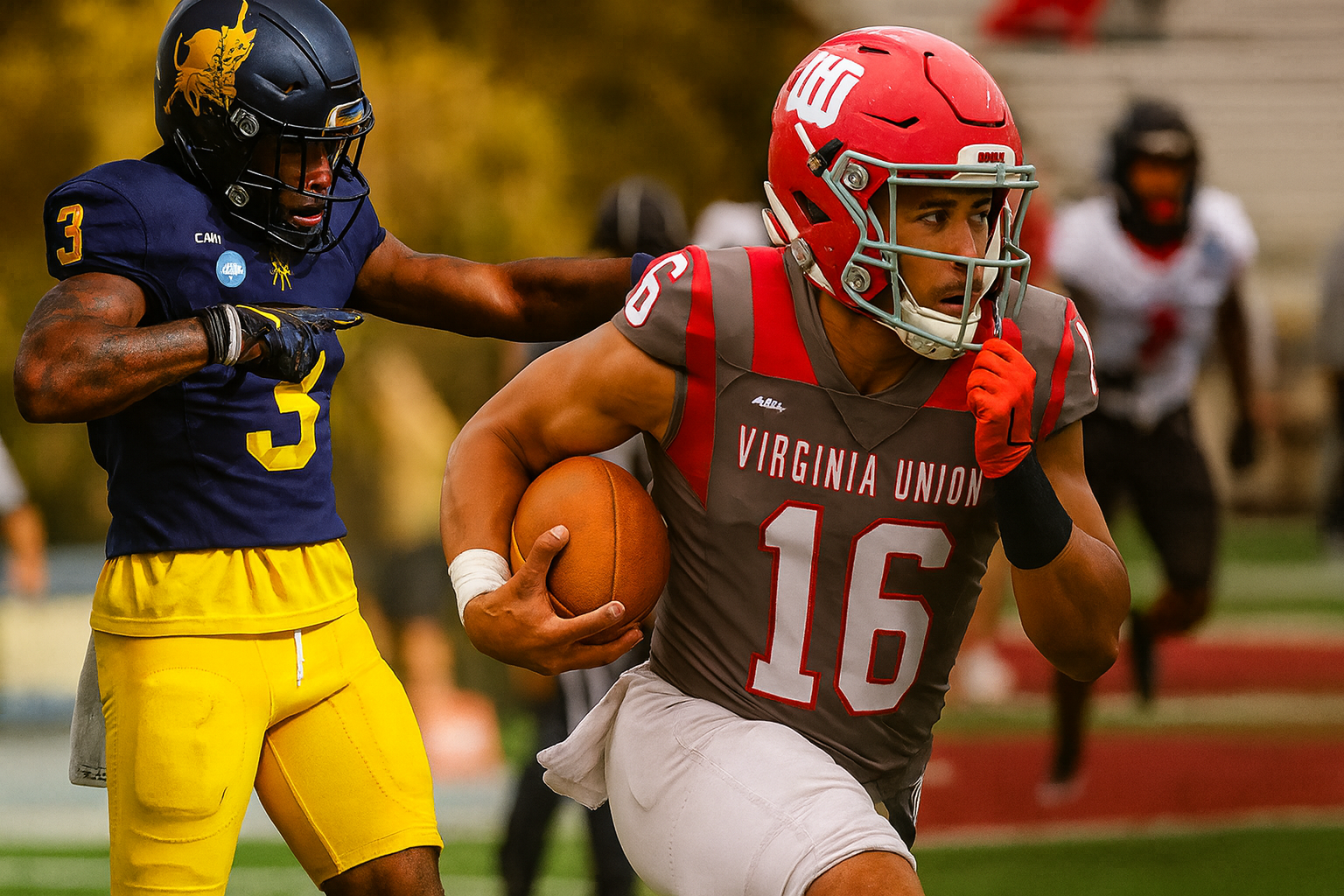
In a season where HBCU football roared louder than it had in years, two proud programs — Johnson C. Smith Golden Bulls and Virginia Union Panthers — stepped onto the national stage with all eyes watching. Conference titles were earned, history was rewritten, and belief ran high that this year, HBCUs were ready to shock Division II.
But on playoff weekend… dreams collided with reality.
JOHNSON C. SMITH — A HISTORY-MAKING SEASON MEETS A BRUTAL END
Just two weeks earlier, Johnson C. Smith was the miracle story of HBCU football. A team that hadn’t raised a conference trophy in more than 50 years finally clawed its way back to glory. The Golden Bulls were riding energy, confidence, and destiny.
But the NCAA Tourna
ment doesn’t care about destiny.
Against Frostburg State, JCSU struggled to find rhythm. Frostburg’s defense came flying downhill — collapsing pockets, disrupting throws, and forcing mistakes. Every spark JCSU created was quickly stomped out.
The Golden Bulls fought. They battled. They refused to fold.
But Frostburg controlled the day.
Final: Frostburg State 21, Johnson C. Smith 7.
A season of magic ended with a cold playoff reality. But the rise of JCSU has changed the CIAA and reshaped expectations for years to come.
VIRGINIA UNION — A DYNASTY STOPPED AT THE DOOR
Virginia Union came into the postseason with pedigree: multiple conference titles, elite talent, and the grit of a seasoned program. The Panthers showed flashes of that dominance against California (PA).
They moved the ball. They made plays. They delivered big hits.
But the playoffs come down to the final possessions.
In the fourth quarter, California (PA) mounted the drive that changed everything. A handful of missed tackles and a perfectly timed score pushed the Vulcans ahead. Virginia Union’s last attempt to respond fell inches short.
Final: California (PA) 27, Virginia Union 24.
A three-point defeat. A three-month grind ended in three minutes of heartbreak.
THE BIGGER PICTURE — A NEW HBCU ERA IS FORMING
These losses weren’t signs of weakness — they were signs of growth.
For the first time in years, multiple HBCU programs entered the NCAA D-II national bracket with real expectations. Programs are recruiting better, investing more, and proving they belong on the national stage.
-
JCSU announced its return to national relevance.
-
VUU showed it can stand toe-to-toe with national powers.
-
And HBCU football overall sent a message:
We’re not just showing up. We’re coming to win.
This year came with heartbreak, yes — but also momentum.
And momentum is what sparks eras.
SEE THE FULL NCAA D-II PLAYOFF BRACKET
Click here to view the complete 2025 NCAA Division II Football Championship bracket:
https://www.ncaa.com/brackets/football/d2/2025
HBCU ORIGINAL
LINCOLN FALLS ON LAST-SECOND SHOT IN 62–60 HEARTBREAKER TO QUEENS (NY)
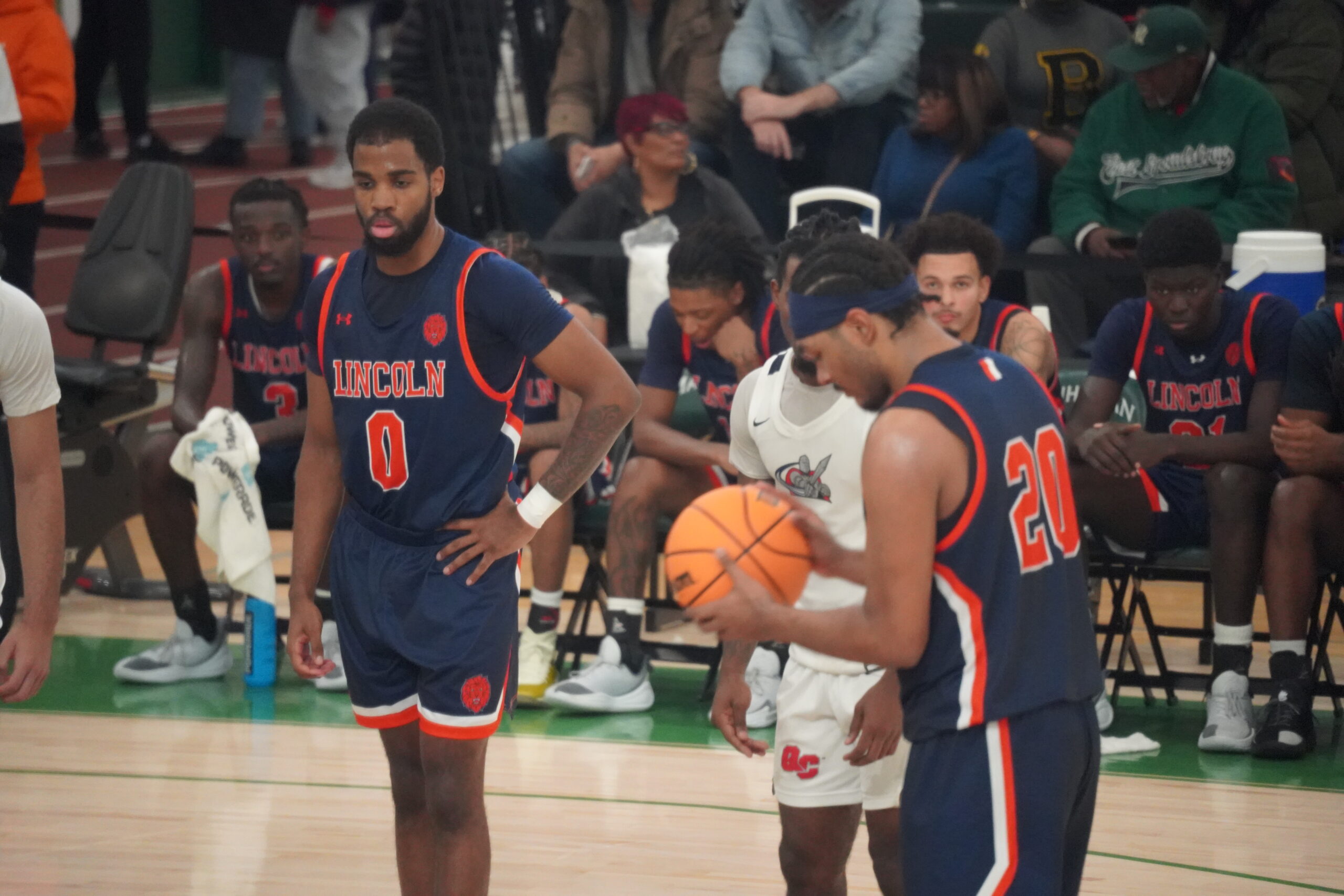
RIVERDALE, N.Y. — Lincoln University battled for 40 minutes, traded punches possession after possession, and held leads deep into the second half—but a buzzer-beating finish spoiled the Lions’ comeback bid as Queens (NY) escaped with a 62–60 win Saturday at the Harlem Renaissance Classic inside Manhattan University’s Draddy Gymnasium.
Lincoln (1–2) matched the Knights blow-for-blow from the opening tip. Both teams went into the half deadlocked at 29–29, with the Lions’ high-efficiency interior scoring keeping pace despite Queens’ early perimeter burst.
The Lions gained traction in the second half behind the dominant play of Julius Olanrewaju, who delivered one of the best performances of the weekend. The senior scored at all three levels, poured in critical jumpers, and carried the Lions offensively during a series of lead changes.
Lincoln took multiple small leads behind strong defensive stretches and second-chance opportunities. BJ Johnson Jr. orchestrated the offense beautifully with seven assists, while the Lions won the rebounding battle 41–27, including 14 offensive boards.
But Queens continued answering every surge. With Tahj-Malik Campbell heating up—on his way to a game-high 28 points—the Knights hung around until the final minute.
With the game tied in the closing seconds, Queens isolated Campbell at the top of the floor. He drove hard to his right and finished a tough, contested layup with under two seconds remaining. Lincoln’s desperation heave missed as time expired, sealing the Lions’ first loss in the Classic and one of the most dramatic endings of the event.
LINCOLN TOP PERFORMERS
Julius Olanrewaju
• 23 points
• 7–13 FG, 3–4 3FG
• 5 rebounds
BJ Johnson Jr.
• 11 points
• 9 rebounds
• 7 assists
Draven Pilson
• 9 points
• 7 rebounds
Ginuwine Tropnas
• 9 points
• 7 rebounds
GAME NOTES
• Game featured 7 lead changes and 6 ties
• Lincoln scored 32 points in the paint and 9 fast-break points
• Lions dominated the glass, 41–27, but shot just 52% at the free-throw line
• Queens closed the game on a late 6–2 run

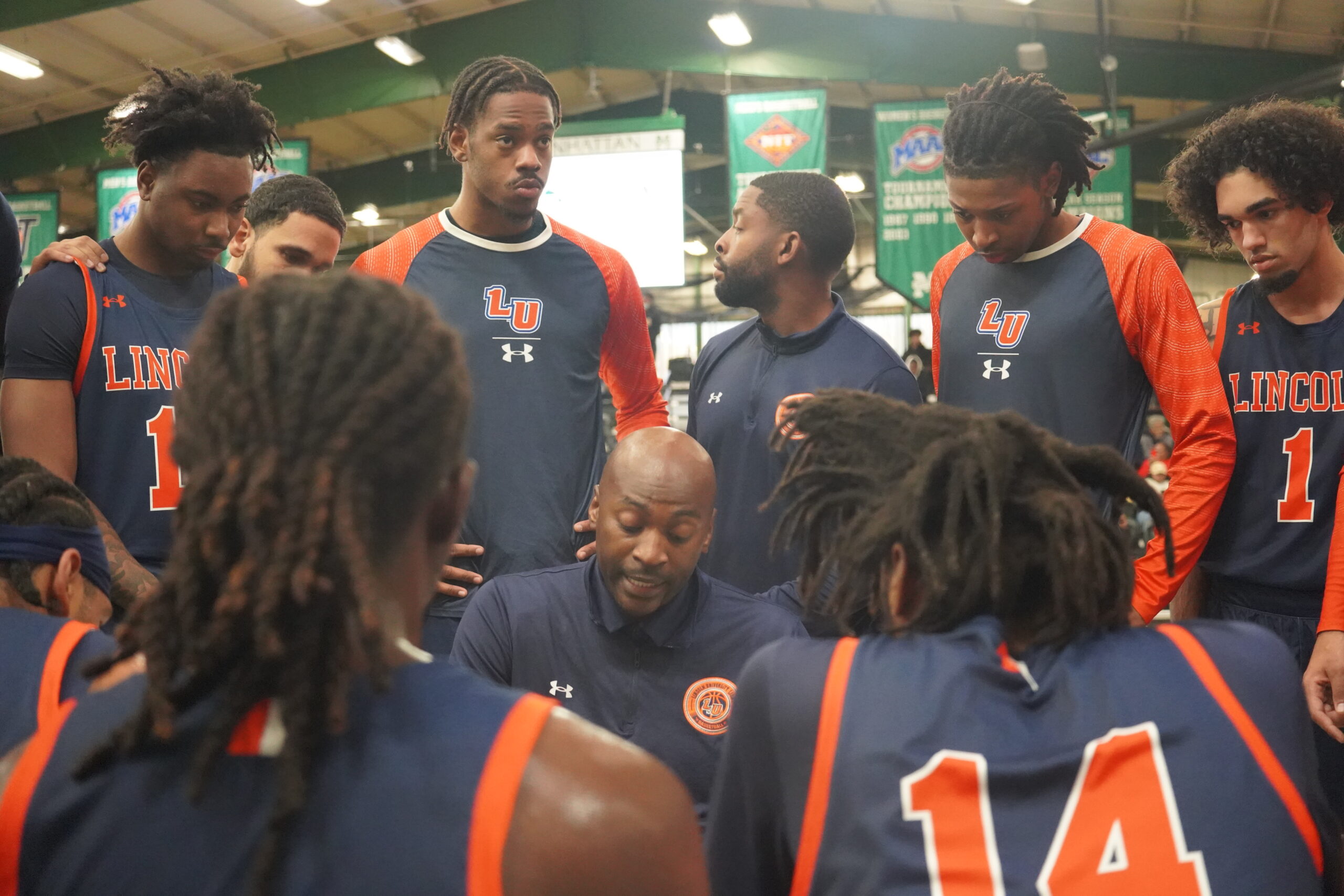
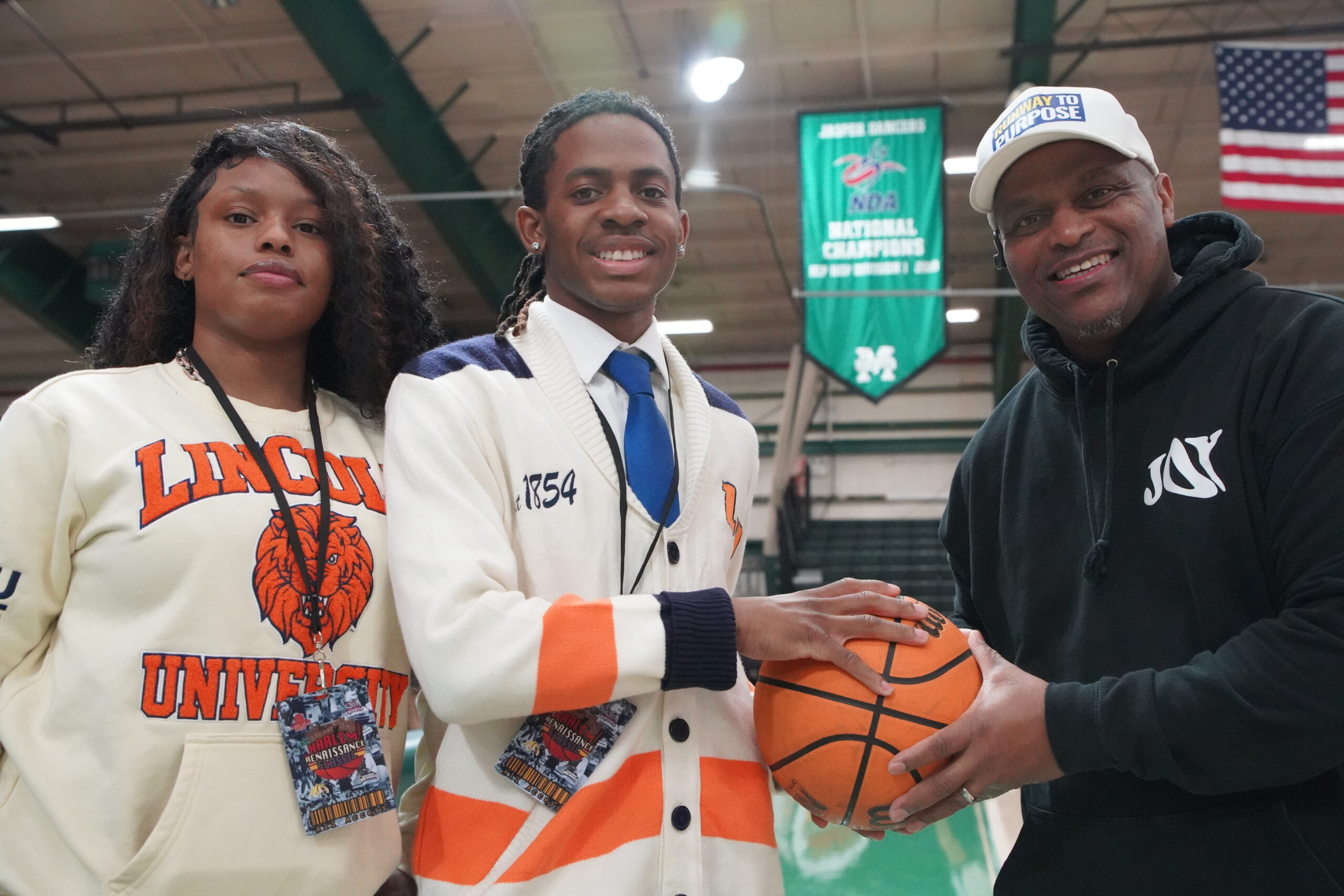
Sports
BOWIE STATE FALLS IN HEARTBREAKER AT HARLEM RENAISSANCE CLASSIC, 65–63

RIVERDALE, N.Y. — Bowie State went punch-for-punch on a national stage, but a last-second three-point play proved costly as the Bulldogs dropped a tough 65–63 decision to Saint Michael’s Saturday afternoon at Manhattan University’s Draddy Gymnasium during the HBCU Harlem Renaissance Classic.
The Bulldogs (0–5) controlled long stretches of the game, showcasing one of their most balanced efforts of the young season. Bowie State owned the paint with 26 interior points and grabbed early momentum behind the shot-making of Justin Morrisey and a late-half go-ahead triple from Charles Thomas III, taking a 35–33 lead into the locker room.
The second half turned into a heavyweight exchange—10 lead changes, defensive swings, and clutch buckets from both sides. Jaiden McGhee, who was electric all night, put BSU ahead 56–49 with 7:49 left, attacking the rim and keeping the Bulldogs explosive in transition. Thomas added another long-range bomb and key free throws down the stretch to keep Bowie State within range.
But the Purple Knights (1–3) clawed their way back with a 14–5 closing run. After back-to-back threes from Abdur-Rahman De Leon and a late and-one from Greg Kenney, Saint Michael’s trailed by just one entering the final moments.
With the score tied and only seconds remaining, Saint Michael’s freshman Quintin Floyd delivered the dagger—finishing a contested layup and converting the free throw with two seconds left. Bowie State drew up one last attempt out of a timeout, but Kenney swatted away the Bulldogs’ final look, sealing the narrow loss.
BOWIE STATE TOP PERFORMERS
Justin Morrisey
• 21 points
• 3–5 from three
• 5 rebounds
Jaiden McGhee
• 20 points
• 8–13 FG
• 6 rebounds
Charles Thomas III
• 11 points
• 2–6 from deep
• 3 rebounds
UP NEXT
The Bulldogs return home on Wednesday, Nov. 26, hosting Cheyney University at 1 p.m. inside A.C. Jordan Arena as they look to turn competitive play into the season’s first win.
For more on Bowie State Athletics and its 14 varsity programs, visit bsubulldogs.com.

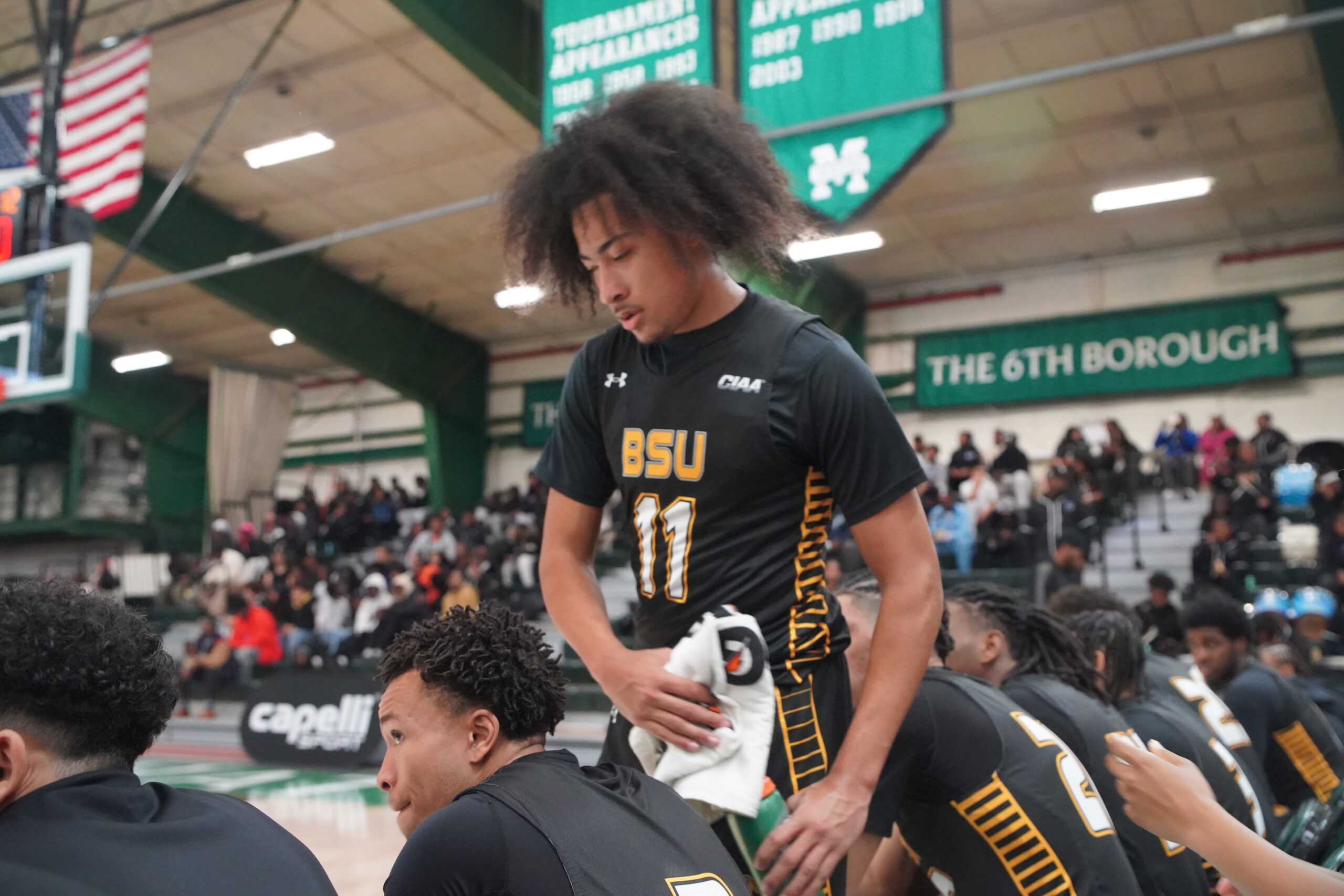
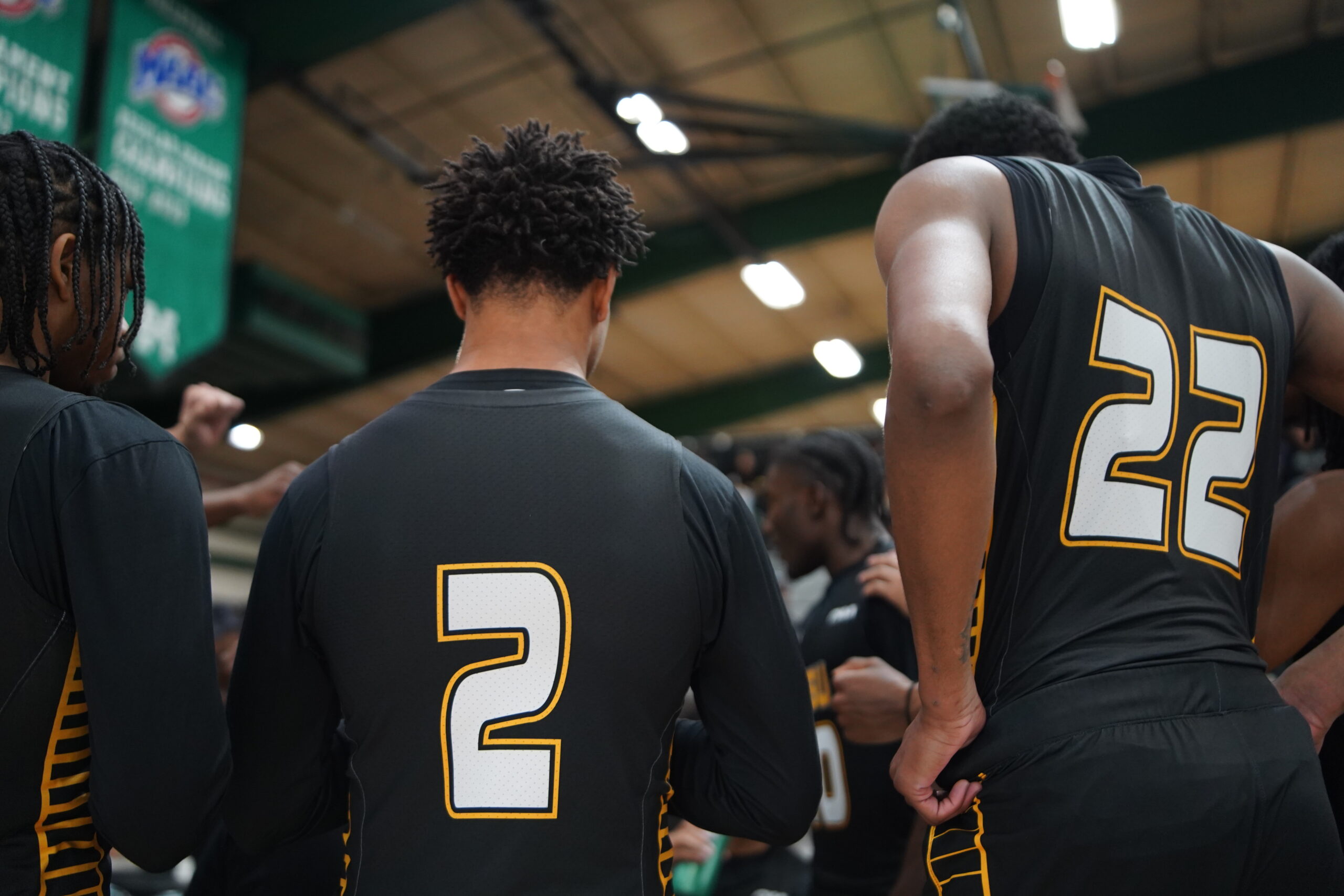
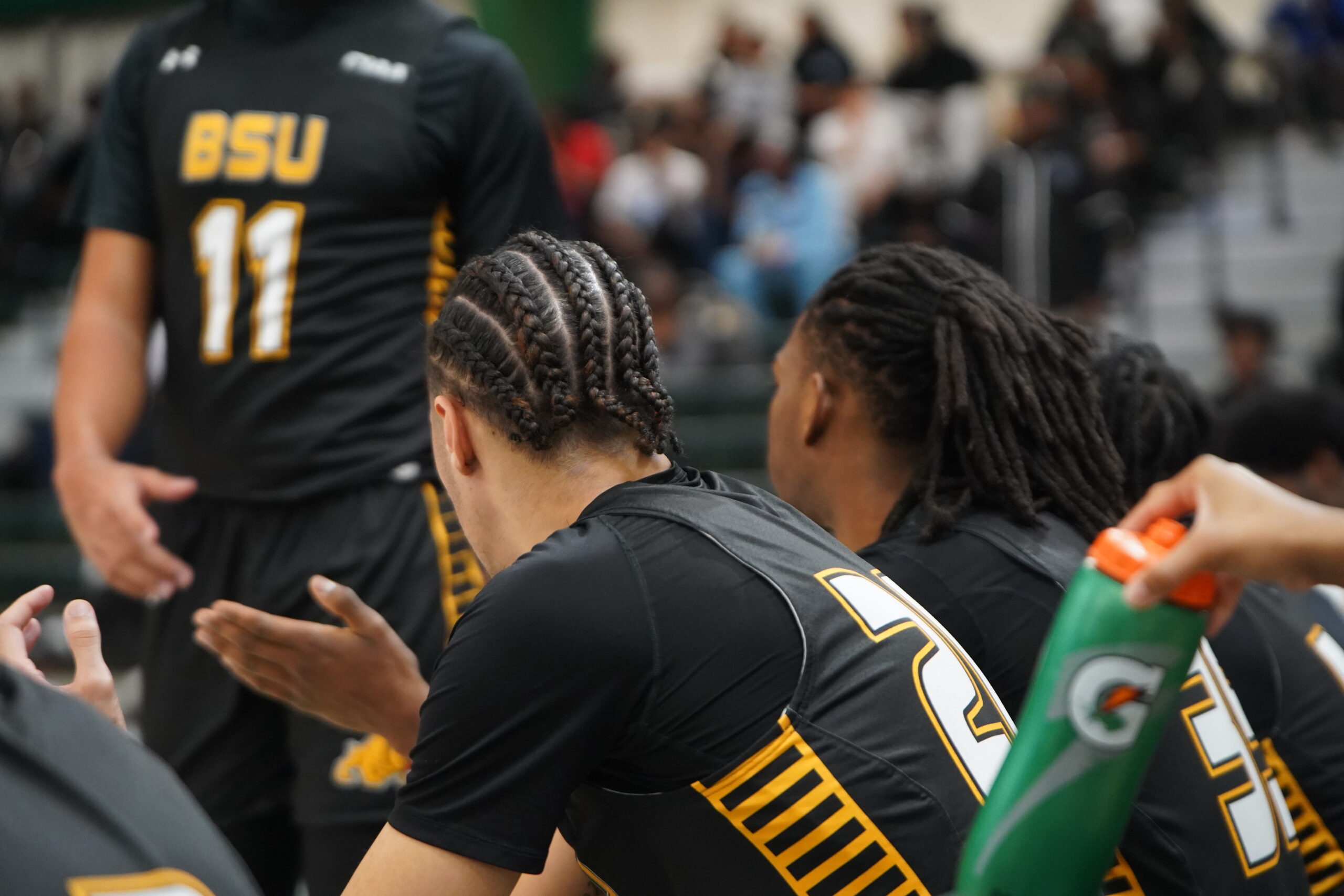




-

 HBCU ORIGINAL4 weeks ago
HBCU ORIGINAL4 weeks agoPhiladelphia: DeSean Jackson & Mike Vick Lead the Charge at the HBCU Football Classic
-

 HBCU ORIGINAL4 weeks ago
HBCU ORIGINAL4 weeks agoElizabeth City State Stuns Bowie State 28–27 in Homecoming Heartbreaker
-

 HBCU ORIGINAL3 weeks ago
HBCU ORIGINAL3 weeks agoDELAWARE STATE SURVIVES MORGAN STATE COMEBACK
-
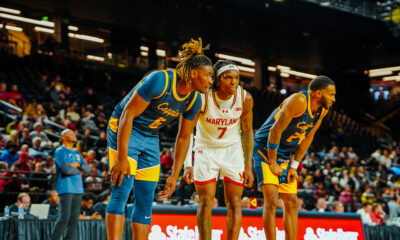
 HBCU ORIGINAL4 weeks ago
HBCU ORIGINAL4 weeks agoCoppin State Shows Fight in Season Opener Against Maryland at CFG Bank Arena
-

 HBCU ORIGINAL2 weeks ago
HBCU ORIGINAL2 weeks agoAlcorn State Braves Take on Maryland Terrapins at Xfinity Arena: Jameel Morris Shines
-
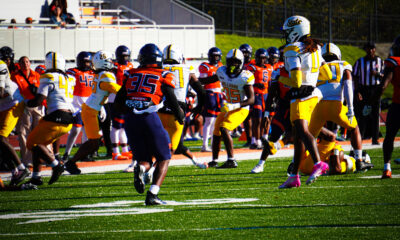
 HBCU ORIGINAL3 weeks ago
HBCU ORIGINAL3 weeks agoBowie State Bulldogs 28, Lincoln University (PA) Lions 17 Lincoln, PA — Frank “Tick” Coleman Field
-

 HBCU ORIGINAL2 days ago
HBCU ORIGINAL2 days agoJCSU & VIRGINIA UNION FALL IN THE NCAA D-II PLAYOFFS**
-

 HBCU ORIGINAL1 week ago
HBCU ORIGINAL1 week agoWalmart Launches Dedicated HBCU Page: A New Win for Culture, Commerce, and Community
